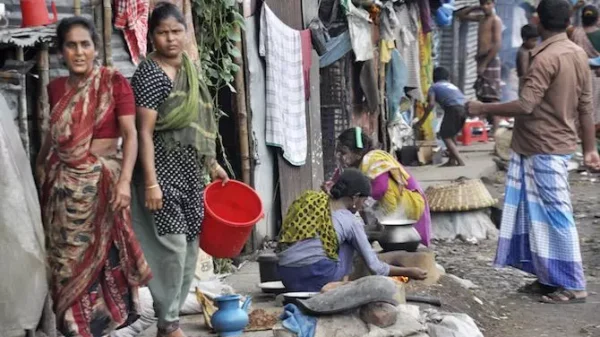


The World Bank on Tuesday said that poverty had worsened in Bangladesh as the rate climbed to 21.2 per cent in the financial year of 2024-25 from 20.5 per cent in FY20023-24.
The deterioration reflects the combined impact of slower growth, high inflation, and worsening labour market conditions, said the Washington-based multilateral lender in its report titled ‘The Bangladesh Development Update’.
In August, local think-tank Power and Participation Research Centre calculated poverty at 27.93 per cent in May 2025 against 18.7 per cent in 2022.
Economists blamed unemployment amid lack of both private and the public investments on the back of the political uncertainty and high inflation for the worsening poverty.
Finance adviser Salehuddin Ahmed, who has been supervising the country’s overall economy on behalf of the interim government, however, raised questions regarding the reliability of the WB data.
The interim government assumed power on August 8, 2024 after the ouster of the Awami League regime,
After a meeting of the advisory council committee on government purchase at the secretariat on the day, the finance adviser explained to reporters that the method of determining the poverty rate by interviewing 5,000 people was also well-known to them.
As of June 2025, the World Bank started defining those as extreme poor who fail to earn $3.00 a day to maintain the basic needs of food, clothing, and shelter in place of the previous $2.15 set in 2022.
Quoting famous economist Amartya Sen, the finance adviser said that the appearance and outlook of people were more accurate in determining the extreme poor.
Admitting that challenges are there, the finance adviser observed that the so high rate was not acceptable.
Poverty on the $3.0 line is projected to rise to 8.9 per cent in Bangladesh in FY25, pushing about 1.2 million more people into poverty, said the WB report.
Economists said that questions could be raised about the accuracy of poverty rates, but none can ignore the growing poverty, rising unemployment, and deteriorating food security in Bangladesh.
Two months earlier, while releasing a survey report, the Power and Participation Research Centre, a research and policy advocacy organisation, said that the rate of poverty jumped to 27.93 per cent in May 2025 from 18.7 per cent in 2022.
The PPRC observed that poverty as well as vulnerability due to indebtedness, chronic diseases, food insecurity, and disguised unemployment had plagued the majority of households amid political and economic uncertainties over the past one year.
Amid high inflation, it is very difficult to witness a positive economic outlook over the past three years, said Mustafa K Mujeri, executive director of the Institute for Inclusive Finance and Development, a research organisation.
Rice, which accounted for the highest 11 per cent weighted average in the overall food basket, witnessed a double-digit inflation in the past 12 months in the case of fine rice while the medium and coarse varieties have been seeing double-digit inflation since December 2024.
Highlighting that the food inflation has eased by around 7 per cent, the finance adviser told reporters that the base of overall food inflation was as high as 14 per cent when the interim government had assumed power.
Had the base at 7 per cent inflation could have been eased at 3 per cent, said the finance adviser.
Terming the prevailing inflation as moderate on the back of a tight monetary policy, lower essential food import duties, and strong harvests, the World Bank in its update said that the fiscal deficit had widened amid weak tax revenue and higher subsidies and interest payments.
Bangladesh’s economy rebounded in the second half of the year, supported by strong exports, record remittances, and an increase in foreign exchange reserves, after disruptions in the first half of FY25 amid the regime change, said the World Bank to narrate the overall economic performance over the past one year.
The World Bank projected that the growth in the gross domestic product would rise to 4.8 per cent in FY26 from 4.0 per cent in FY25 and to reach 6.3 percent in FY27.
It noted that the country was expected to follow an upward growth trajectory in the medium term, but urgent reforms were critical to sustaining growth and job creation — especially for youths and women.
Employment generation has also been a formidable challenge for the present government, said Masrur Reaz, the chair and chief executive officer of Policy Exchange Bangladesh.
Political uncertainty discourages investments, said the economist.
In its report, the World Bank also noted that persistent policy uncertainties surrounding the national election and fragilities in the banking sector weigh on private sector activity.
Similarly, public investment growth is expected to remain subdued ahead of the election and in light of the authorities’ intent to implement development projects more prudently, added the World Bank.